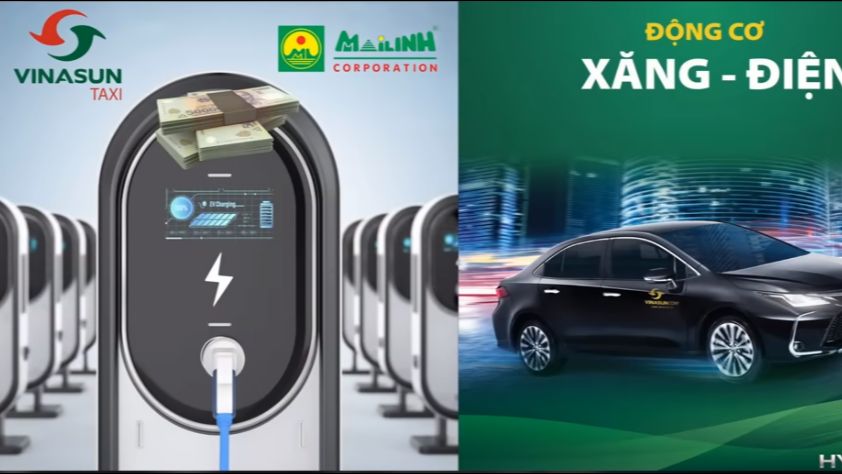In the past two years, the topic of electric vehicles has always been a hot topic of discussion at meetings of major traditional taxi companies in Vietnam. Since the new competitor Xanh SM officially entered the market in early 2023, the shareholders of traditional taxi companies have become more concerned about the use of green vehicles in the increasingly fierce competition.
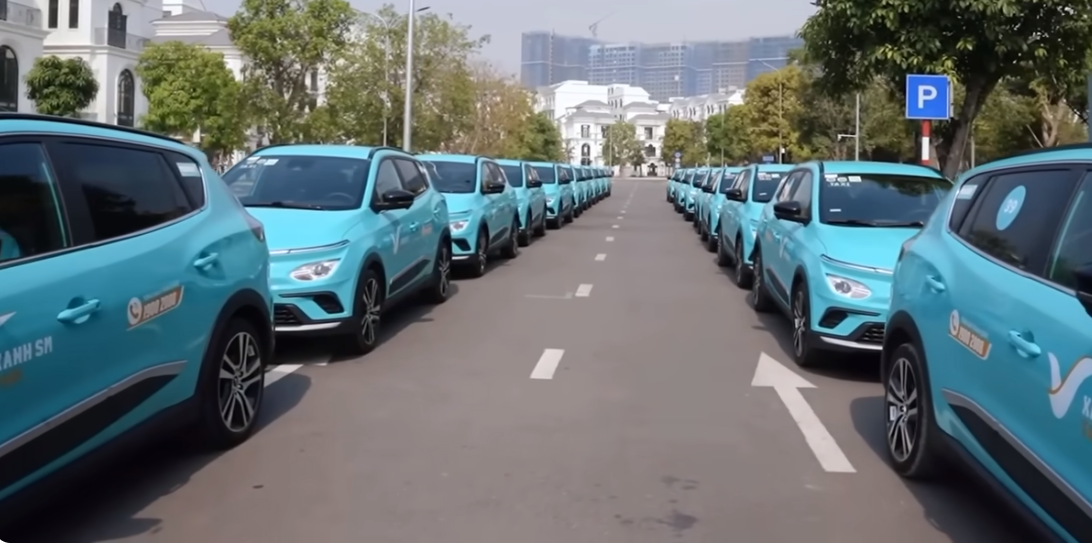
At the annual general meeting of shareholders of Vinasun and Mai Linh held in April this year, both companies announced plans to gradually convert their old vehicle models to more environmentally friendly vehicles. However, instead of upgrading to fully electric vehicles, the two giants in the traditional taxi industry in Vietnam have decided to shift to fuel-efficient hybrid vehicles.
This decision is believed to balance the high initial investment costs of electric vehicles with the need to reduce fuel costs in the context of skyrocketing fuel prices. However, some experts believe that this decision is overly cautious and may gradually erode the competitive advantage of traditional taxi companies against new competitors.
Not suitable for the business model of Mai Linh and Vinasun
Recently, Mai Linh announced a partnership plan with Toyota Vietnam and Toyota Financial Services to invest in 9999 new vehicles expected to be completed within the next 3 years. Specifically, in 2024, Mai Linh aims to invest in 2224 vehicles, including 1000 Toyota Camry and Vios hybrid vehicles for the Hanoi and Ho Chi Minh City markets. According to Mai Linh's leadership, electric vehicles are a popular trend in many countries around the world and are also well received by Vietnamese consumers due to their environmental benefits. However, after careful research, Mai Linh believes that electric vehicles are not truly suitable due to infrastructure limitations for charging and battery disposal issues in Vietnam.
Therefore, instead of investing in electric vehicles, Mai Linh has decided to shift to Toyota hybrid vehicles to both meet the environmental protection goals of reducing CO2 emissions and address the aforementioned limitations of pure electric vehicles. Similarly, Vinasun also plans to invest in about 700 Toyota hybrid vehicles in 2024 with a budget of around 630 to 650 billion VND, of which 50% of the investment capital comes from preferential bank loans. If successful, Vinasun may increase its investment to 1000 vehicles this year. The old vehicles will be sold to Vinasun Green subsidiary in Da Nang, with a maximum of 100 vehicles per year. This is Vinasun's solution to gradually eliminate old vehicles and transition to more fuel-efficient hybrid vehicles.
According to Vinasun's Deputy General Director Tran Anh Minh, hybrid vehicles can save up to 50% of fuel compared to conventional gasoline vehicles, while electric vehicles consume about 800 VND of fuel per kilometer. Hybrid vehicles cost about 1100 to 1200 VND per kilometer without the opportunity cost of charging. In contrast, electric vehicles face limitations in charging time and high charging costs when applied to Vinasun's large scale. Therefore, hybrid vehicles are a suitable choice for Vinasun's business characteristics during the energy transition. Currently, Vinasun needs to concentrate its vehicles for inspection before operation, but there is no charging station that can accommodate 40 to 50 Vinasun vehicles for inspection if they were electric vehicles.
Safety strategy
Both Mai Linh and Vinasun have valid reasons for choosing to invest in hybrid vehicles instead of pure electric vehicles. In fact, apart from the electric vehicle models produced by VinFast, the electric car market in Vietnam is still very limited in terms of quantity and available models. If importing electric vehicles from abroad, taxi companies will have to face various fees and high customs costs, although this is only a minor barrier. As of now, Vietnam has nearly 150,000 electric vehicle charging stations spread across 63 provinces and cities, concentrated in residential areas, rest stops, shopping centers, offices, parking lots, gas stations, and highways.
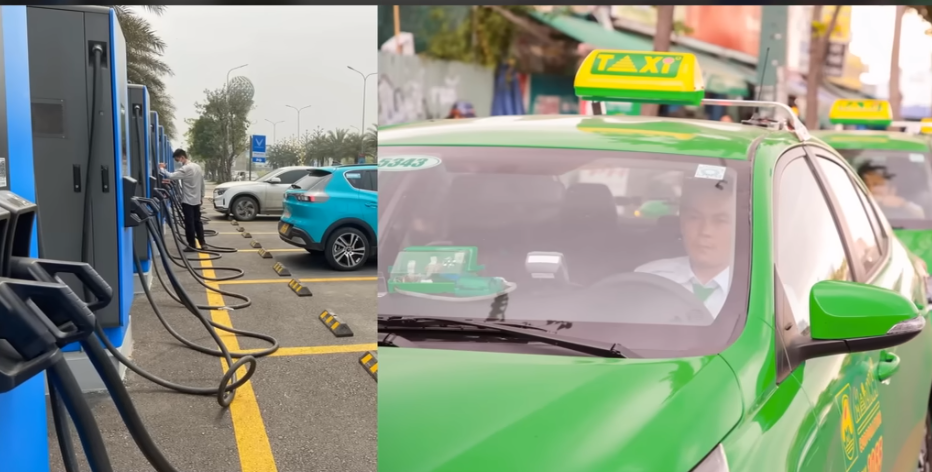
Although surpassing many countries in the number of charging stations, this system mainly serves VinFast vehicles, so imported models like Porsche or Hyundai Ioniq 5 can only be charged at the manufacturer's own stations or at home. Therefore, small taxi companies like En Vang, Lado, and Son Nam choose to buy or rent VinFast electric models through the GSM brand Xanh SM. They have limited options for imported electric vehicles and face difficulties in finding charging locations for those models, while leading companies like Mai Linh and Vinasun need thousands of vehicles to operate daily.
If they choose electric vehicles, the two companies will have to invest hundreds of billion VND in their own charging systems, and the long charging time will also result in the vehicles being out of service for many hours each day. Therefore, the fuel-efficient hybrid vehicle solution is a more suitable and safer choice for Mai Linh and Vinasun at this stage. At the annual general meeting of shareholders in 2023, Vinasun's Deputy General Director Tran Anh Minh stated that when introducing a new type of vehicle into business operations, four factors need to be considered: initial investment costs, daily operating costs, maintenance costs, and the resale value of the vehicle along with the ability to sell used vehicles.
In addition, time plays an important role for a taxi business, especially the time required to charge the electric vehicle's battery before each shift, which is much longer than traditional gasoline vehicles. Not to mention risks such as running out of battery or lacking charging stations during a trip. According to statistics, an electric car with a 60 KWh battery capacity requires up to 8 hours to charge from 0 to 100% with a slow 7 KW charger. The charging time also depends on the type of standard charging port, fast charging, or super-fast charging with standard charging. Owners need 8 to 12 hours to fully charge with a slow charger, shorten to 1 hour with fast charging, and super-fast charging only takes about 10 minutes to reach 80% battery capacity.
Therefore, transitioning to hybrid vehicles not only helps taxi companies save charging time but also meets environmental protection requirements. Additionally, drivers' income is improved due to increased operational efficiency in the face of domination by the Xanh SM green competitor. Specifically, in 2024, Vinasun aims to increase its fleet to 2790 vehicles, an 8% increase from 2023, while Mai Linh had nearly 14,700 vehicles by the end of last year, compared to Xanh SM, which was established just over a year ago but already owns over 17,000 electric cars. This number is much higher than Vinasun or Mai Linh.
Electric taxis are spreading widely
According to data from the Hanoi Taxi Association and the Hanoi Transport Association before the COVID-19 pandemic in 2020, there were about 23,000 taxis in Hanoi. However, due to the prolonged impact of the pandemic over 2 years, the number of taxis decreased significantly by about 40%, with around 14,000 taxis in operation. After the pandemic, the number of taxis in Hanoi has recovered, but the actual number is only about 19,000 taxis in operation among 50 transportation companies and cooperatives. This number is lower than the 84 taxi companies operating before the pandemic. In Ho Chi Minh City, the number of licensed taxis in operation is about 24,000, a 1/3 decrease from before the COVID-19 pandemic, based on statistics from traditional taxi companies and a recent report from Model Intelligence.
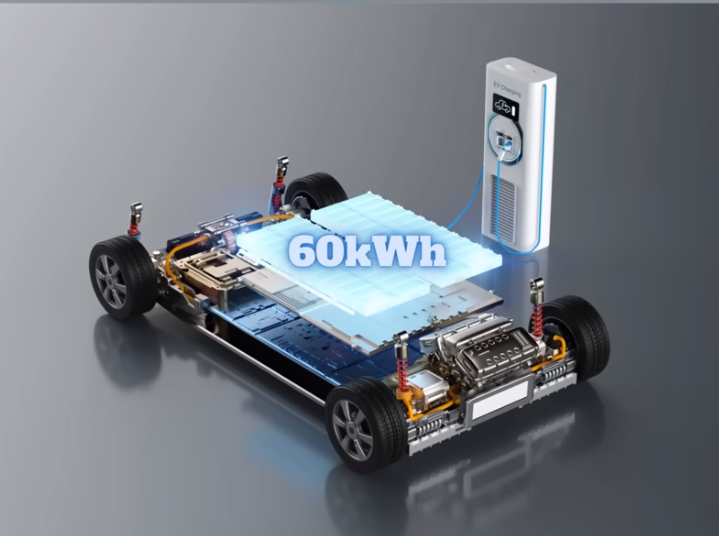
According to a comprehensive survey from transport associations and taxi associations across the country, there are currently about 200 taxi companies and transport cooperatives providing services, with a total of 67,000 vehicles by the end of 2022. This number is a 15% decrease compared to the statistics from 4 years ago when there were about 79,000 taxi vehicles nationwide. Therefore, the COVID-19 pandemic has severely reduced the traditional taxi industry in terms of both the number of vehicles and active businesses, especially in Hanoi and Ho Chi Minh City, the two largest markets in the country. According to a report by the market research company Model Intelligence, the Vietnamese taxi market was valued at $440 million in 2020 and is expected to increase to $790 million by 2026, with a compound annual growth rate (CAGR) of about 10.25% from 2021 to 2026.
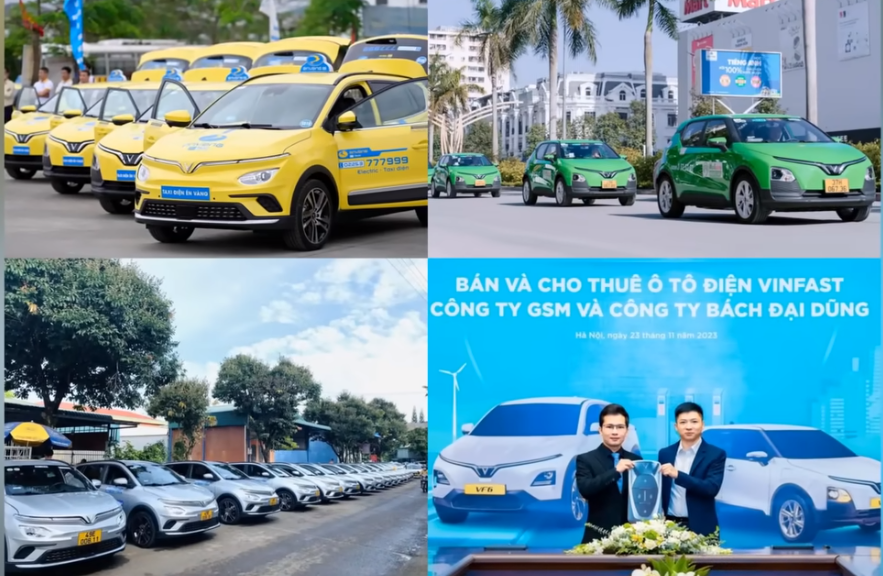
Notably, all taxi vehicles nationwide from 2019 to 2023 were running on gasoline, not including the large number of electric vehicles introduced to the market by the GSM company under the Xanh SM brand. As mentioned, according to GSM's statistics, after 13 months of operation, the number of electric taxis from Xanh SM has reached about 17,000 vehicles nationwide. This number does not include about 2000 vehicles that GSM leases or sells on installment to local taxi companies like En Vang, Dong Thuy, My Love, and Bach Dai Dung. Therefore, the total number of electric taxis from GSM and local companies is about 19,000 vehicles compared to the total of 67,000 traditional gasoline taxis in operation.
The proportion of electric vehicles accounts for about 22.3% of the market share, with a rapid increase in the number of electric taxis just one year after entering the market, demonstrating the attractiveness of this model. The current number of electric vehicles in Vietnam is equivalent to the number of electric taxis operating in Shenzhen, the most developed city in China.
